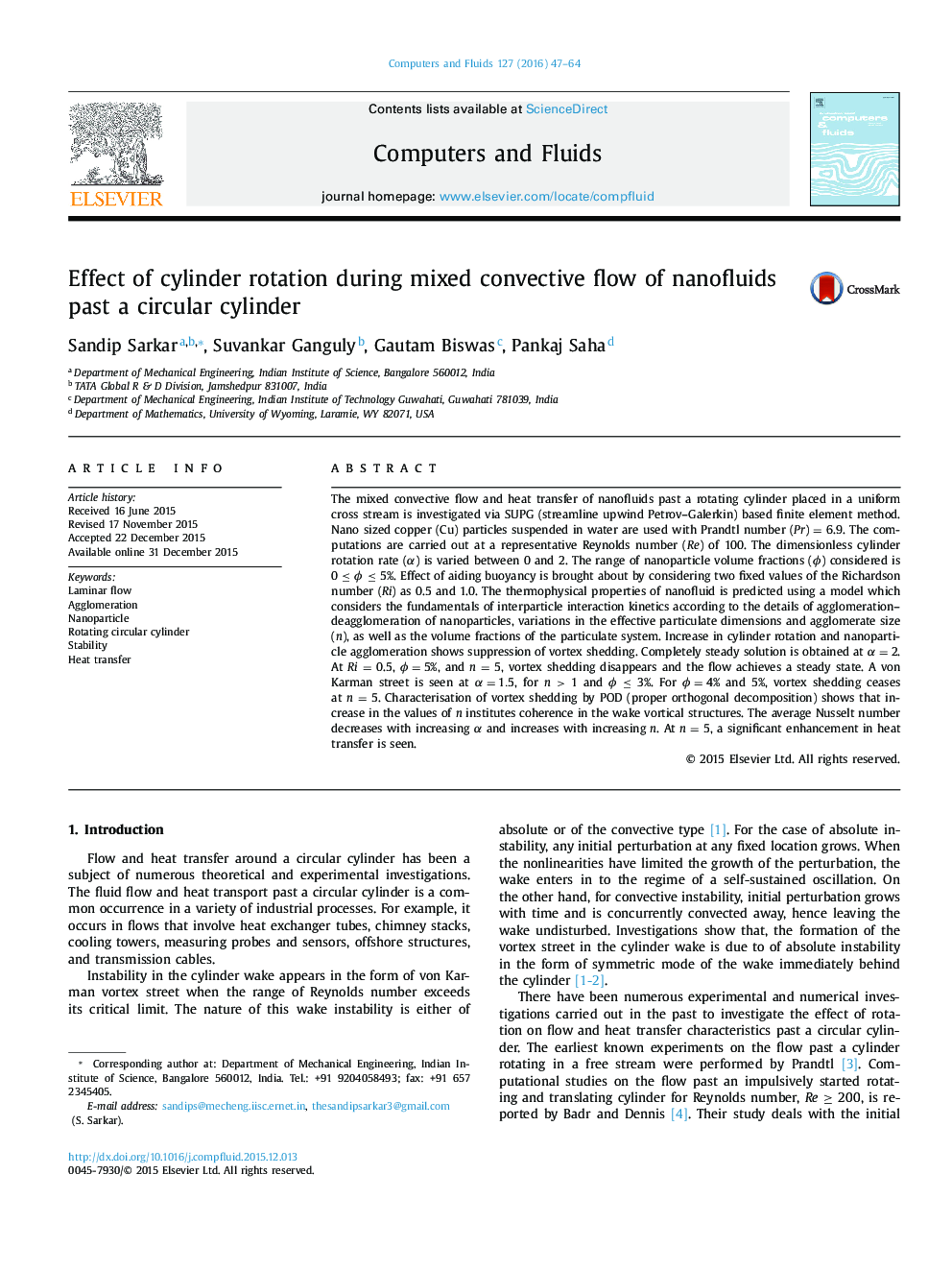| کد مقاله | کد نشریه | سال انتشار | مقاله انگلیسی | نسخه تمام متن |
|---|---|---|---|---|
| 761416 | 1462683 | 2016 | 18 صفحه PDF | دانلود رایگان |
• A new model for thermophysical properties of nanofluids has been presented.
• Suppression of vortex shedding is observed with nanoparticle agglomeration.
• Heat transfer reduces with increasing cylinder rotation.
• Nanoparticle agglomeration enhances heat transfer from cylinder surface.
• Thinning of thermal boundary layer is encouraged by nanoparticle agglomeration.
The mixed convective flow and heat transfer of nanofluids past a rotating cylinder placed in a uniform cross stream is investigated via SUPG (streamline upwind Petrov–Galerkin) based finite element method. Nano sized copper (Cu) particles suspended in water are used with Prandtl number (Pr) = 6.9. The computations are carried out at a representative Reynolds number (Re) of 100. The dimensionless cylinder rotation rate (α) is varied between 0 and 2. The range of nanoparticle volume fractions (ϕ) considered is 0 ≤ ϕ ≤ 5%. Effect of aiding buoyancy is brought about by considering two fixed values of the Richardson number (Ri) as 0.5 and 1.0. The thermophysical properties of nanofluid is predicted using a model which considers the fundamentals of interparticle interaction kinetics according to the details of agglomeration–deagglomeration of nanoparticles, variations in the effective particulate dimensions and agglomerate size (n ), as well as the volume fractions of the particulate system. Increase in cylinder rotation and nanoparticle agglomeration shows suppression of vortex shedding. Completely steady solution is obtained at α=2α=2. At Ri = 0.5, ϕ=5%ϕ=5%, and n = 5, vortex shedding disappears and the flow achieves a steady state. A von Karman street is seen at α=1.5α=1.5, for n > 1 and ϕ ≤ 3%. For ϕ=4%ϕ=4% and 5%, vortex shedding ceases at n = 5. Characterisation of vortex shedding by POD (proper orthogonal decomposition) shows that increase in the values of n institutes coherence in the wake vortical structures. The average Nusselt number decreases with increasing α and increases with increasing n. At n = 5, a significant enhancement in heat transfer is seen.
Journal: Computers & Fluids - Volume 127, 20 March 2016, Pages 47–64
